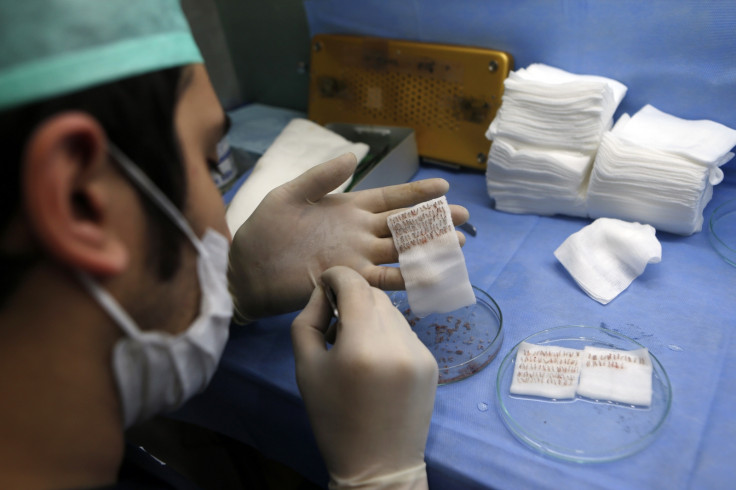Hertfordshire Boy Born Without Ears Grows a Pair From His Own Ribs

Kieran Sorkin underwent surgery at Great Ormond Street Hospital in London to create a pair of ears from his ribs.
The nine-year-old from Hertfordshire was born deaf but with tiny lobes where his ears should be. The medical condition is known as bilateral microtia - which affects just one in 100,000 babies - a congenital deformity where the external ear is underdeveloped.
Consultant plastic surgeon Neil Bulstrode traced the shape of his mother Louise Sorkin's ears.
"When a patient has one ear we can match the new ear to that. Fortunately Kieran's mum has very pretty ears so that should work well," he told BBC News.
During the operation, the medical team removed cartilage from six of his ribs. It was then cut, shaped and sewn into place.
The surgery does not improve hearing but is cosmetic. The boy already is able to hear, because of previous surgery, which implanted a hearing aid.
"If you can change the confidence of a patient at this young age, you can change their whole trajectory in life," said Bulstrode, who carried out the surgery.
Kieran's father spoke to the Wexford Echo, explaining that his son will have a follow-up operation in six months time, and hopefully not need to have any more. "These should last because they are cartilage and not prosthetics," Sorkin said.
Great advances have been made in tissue engineering, making possible complex reconstructive surgery of this kind.
Scientists at the Institue of Child Health (ICH), are now able to create stem cells from the fat tissue of patients.
Dr Patrizia Ferretti, leader of the ICH's Development and Regeneration Group, who is leading the study, said: "This approach would be far less invasive for a child than the current method of harvesting a child's rib cartilage."
Last year scientists in the US implanted a human-like ear, grown from cow and sheep cells, onto a rat.
© Copyright IBTimes 2025. All rights reserved.






















